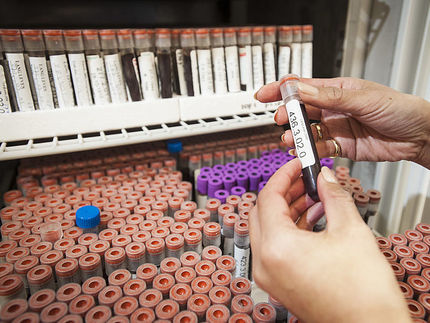Study Proposes Framework to Standardize Biomarkers of Aging and Accelerate Clinical Use
Improving the life expectancy and health of the population
A new study proposes a framework to standardize biomarkers of aging and accelerate clinical use. Co-author Chiara Herzog from the European Translational Oncology Prevention and Screening Institute at the University of Innsbruck explains how this could improve the life expectancy and health of the population.
Biomarkers are measurable characteristics that can be used to evaluate normal biological processes, diseases, or responses to treatment in patients. Using biomarkers to assess biological aging, or the increase in molecular and cellular damage over time, has recently gained popularity for its potential to predict longevity and quality of life. However, there are currently no guidelines for standardizing the development and validation of biomarkers of aging — a necessary process to ensure accurate and reliable outcomes in the clinic.
A new study jointly led by investigators from the University of Innsbruck and Harvard Medical School proposed a framework for future validation of aging biomarkers that could help translate them into clinically actionable tools.
To do this, the team examined population-based cohort studies of blood-based biomarkers of aging built using highly detailed, large amounts of molecular data (‘omic’). Using this information, they identified challenges in comparing the predictive strength of biomarkers, such as variations in study design and data collection methods, as well as inherent differences in population-specific traits.
The authors then provided recommendations to address these difficulties. They suggest that “multi-omic approaches”, i.e., those that involve detailed molecular measurements across multiple molecules within the same person – such as blood metabolites, proteins, or modifications to our DNA, also termed ‘epigenetics’, will provide greater insights into biomarker predictive performance. Instead of relying only on mortality as an aging-related outcome, the researchers advocate for the consideration of biomarker associations with other health factors like functional decline, frailty, chronic disease and disability. In addition, they recommend standardizing omic data to enhance validation efforts. “By bringing together our efforts in the aging research community we can enhance the value of individual datasets. Harmonizing data, making it openly available, and providing open source tools such as Bio-learn that engage not just biologist but also data scientists will be instrumental to the validation of biomarkers of aging”, said co-first author Chiara Herzog, PhD, of the European Translational Oncology Prevention and Screening Institute at the University of Innsbruck.
The framework also encourages increased collaboration between research groups on large-scale, longitudinal studies that can track long-term physiological changes and responses to health-promoting interventions or therapeutics in diverse populations. Some of such studies are currently ongoing at the University of Innsbruck, with first results to be expected soon. “The TirolGESUND study conducted at EUTOPS and the University of Innsbruck followed individuals for over six months over the course of health-promoting interventions. It measured detailed clinical and molecular features will result in the globally most detailed atlas of biomarkers and lifestyle changes to date.” Further work is required to understand how implementation of biomarker evaluation in clinical trials might improve patient quality of life and survival.
“If we hope to have clinical trials for interventions that extend healthy lifespan in humans, we need reliable, validated biomarkers of aging,” said co-first author Jesse Poganik, PhD, of the Division of Genetics at Harvard Medical School. “We hope that our framework will help prioritize the most promising biomarkers and provide health care providers with clinically valuable and actionable tools.”
Original publication
Most read news
Original publication
Organizations
Other news from the department science

Get the analytics and lab tech industry in your inbox
By submitting this form you agree that LUMITOS AG will send you the newsletter(s) selected above by email. Your data will not be passed on to third parties. Your data will be stored and processed in accordance with our data protection regulations. LUMITOS may contact you by email for the purpose of advertising or market and opinion surveys. You can revoke your consent at any time without giving reasons to LUMITOS AG, Ernst-Augustin-Str. 2, 12489 Berlin, Germany or by e-mail at revoke@lumitos.com with effect for the future. In addition, each email contains a link to unsubscribe from the corresponding newsletter.



























































